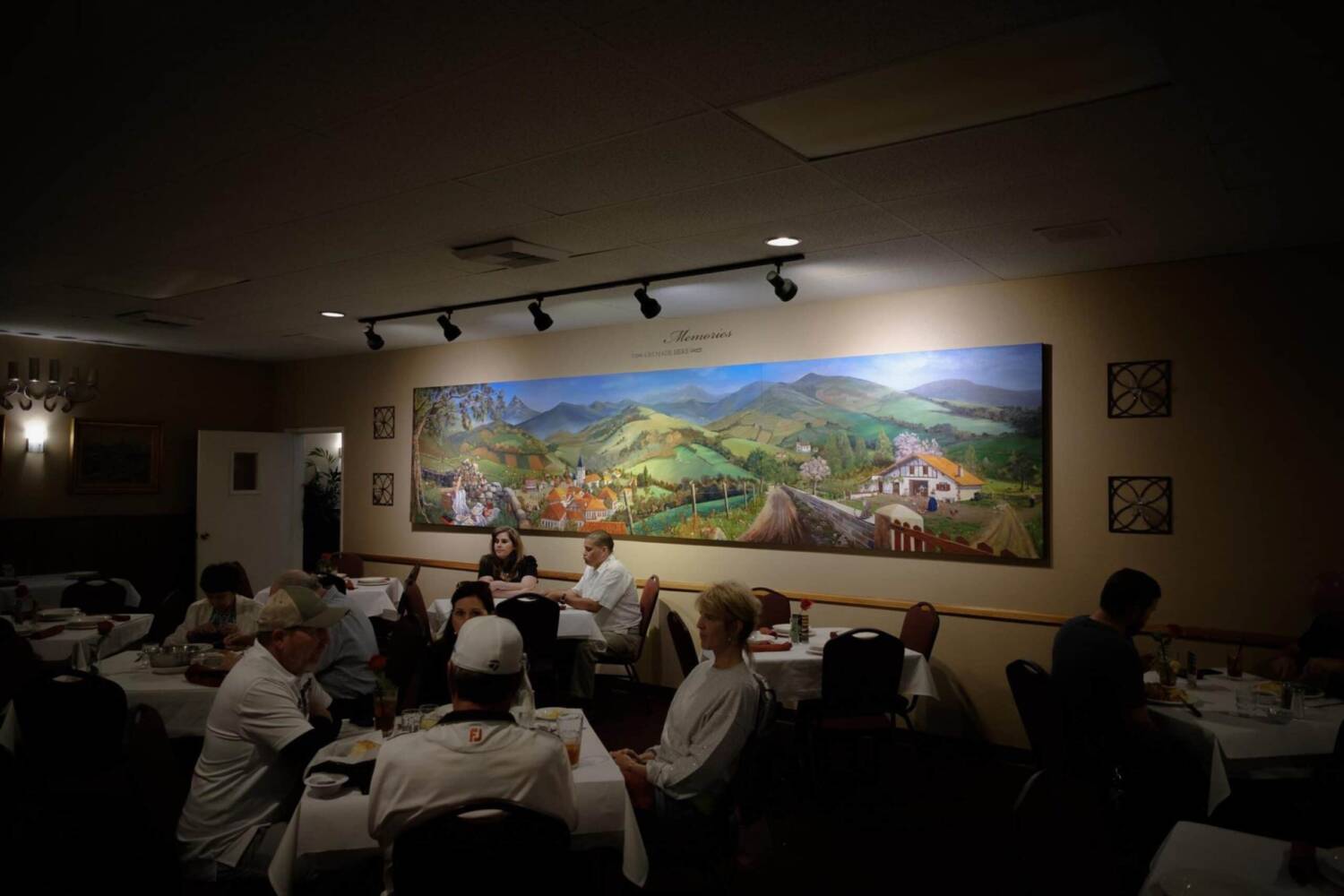Cynthia Rebolledo has just published on the website LAist, part of Southern California Public Radio, a magnificent chronicle of the end of a fundamental part of the history of the Basques in the US, the ostatu Amerikanuak.
Starting with the story of Michel Bordagary, aged 83, the last boarder at the Centro Basco in Chino, the article helps give us insight into a bygone era. Times have changed, and young Basques no longer arrive their in search of a better life, or getting out of obligatory military service in the French or Spanish armed forces, or fleeing repression in the Kingdom of Spain. After a long period of numerous waves of migrants to the US, starting in the 19th century and continuing through to the 1960s, the number of Basques emigrating to the States has dropped, and those who do go are no longer seeking to tend to sheep or fields in the western states.
Basque boarding houses served for many things: as a place to take in new arrivals; as a residence for the sheepherders when they weren’t working out on the ranches; as a meeting place for a community that sought to stay in touch with the land they had left behind… Those boarding houses and restaurants fulfilled a need for social cohesion that those Basques who had had to emigrate to a foreign land and culture, so different to their own felt.
And it’s a mission they must still fulfill if they want to survive. Now it’s a lot harder, because the descendants of those Basques in the US are well integrated into the society that took in their forbears, and they do not feel that overwhelming need for a place to meet. Their feeling of belonging is voluntary; quite different to their ancestors.
All these places, these Basque centers, must become a place where those new generations can strengthen the bonds that tie them to their homeland. They have to go there not because they have no other option but rather because it helps them understand who they are and where they come from. Likewise, they must also serve as representatives of the culture of our country in the US.
The pandemic has hit these places hard. Last year’s closure of the Noriega Restaurant, which we had blogged about on numerous occasions, after over 120 years in operation, was a clear sign of the complicated set of factors that was pushing Basque hotels and restaurants right up to the abyss. And sometimes over.
It is a great challenged, but one in which they have a huge element in their favor: Basque cuisine in the US. As H-D. Miller, head of the Department of History, Politics, and Philosophy at the University of Lipscomb in Nashville, stated a few years ago, that cuisine should be considered the authentic regional cuisine of the US Intermountain West, between the Sierras and the Rockies. We’re sure that influence also extends further west, into California, at least up the Coast Ranges.
Following that evolution give us the opportunity to observe the interesting aspects and details as this disappearing world evolves into one that adapts to the characteristics of the society it lives in. And this will surely happen, because if there’s one thing the Basque communities abroad know how to do, it’s to withstand and adapt. We’re sure that in the West, as in the rest of the world, they will continue to thrive.
LAist -25/5/2021 – USA
The Last Resident Of Chino’s Last Basque Boarding House Hangs On To Tradition
It’s lunchtime, and 83-year-old Michel Bordagary sits alone at the center of the long Boarder’s Table at Centro Basco in Chino. All that surrounds him in the empty dining room where he has eaten lunch and dinner for the past 55 years are old photographs on the dark wood-paneled walls. He can’t say for sure how many meals he has had here since 1966, when he boarded a train from Stockton for Chino, with only the clothes on his back and whatever belongings he could carry. Today, he’s having Poulet Basque (braised chicken with tomatoes and peppers) and a glass of red house wine.
(Follow) (Automatic translation)
Header photo: Dinner at the Centro Basco in Chino, California (AL KAMALIZAD: FOR LAIST)
Last Updated on May 30, 2021 by About Basque Country





























